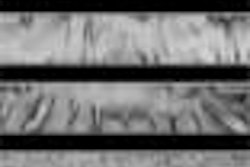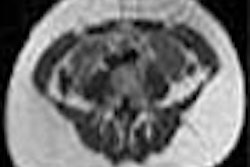Imaging centers in the U.S. can be profitable, but the landscape is littered with ventures that have failed to capitalize on current market forces. Some centers don't make it because they are underfunded. Others are unable to attract enough professionals to meet staffing needs, or find they cannot break into markets controlled by competing groups.
A common element among failed imaging centers is inadequate analysis of critical financial factors. These issues are vital in defining actual startup costs, predicting realistic expected values, and determining a break-even point for the venture.
Dr. Jonathan Berlin, a radiologist at Evanston Hospital-Northwestern University in Evanston, IL, presented a financial model to assess the viability of a freestanding outpatient CT center at the 2003 American Roentgen Ray Society meeting in San Diego.
"We’ve constructed a financial model that we feel is important to project decision-making that accounts for cost, cash flow, and a break-even analysis," said Berlin, who is also an assistant professor at the Northwestern University Feinburg School of Medicine in Chicago.
Start me up
The team developed a model of an imaging center, analyzing the feasibility of opening a freestanding imaging center in suburban Chicago that would be privately owned and non-academic.
The center would contain one multidetector-row CT scanner that would be used to conduct a mix of screening and diagnostic studies. Berlin forecast that the center would be open 10 hours a day, six days a week, for a total of 312 business days a year.
The researchers selected CT as their modality of choice for the study, based on an analysis of outpatient CT imaging in the U.S. from 1995 through 2001. They found that use of the modality on an outpatient basis had increased by more than 20% during that six-year period.
The group then looked at startup costs, also known as sunk costs, which were not factored into the break-even analysis, Berlin said. For the startup analysis, the team interviewed general contractors in the area.
"We came up with a quote of around $700,000 from a general contractor, and that includes architecture, office-space renovations and decorations, and equipment installation," Berlin said.
No quick fix
The team then examined the fixed costs associated with bringing the center into service. Fixed costs represent the sum of all costs needed to produce the first unit of product. For an imaging center, these would include equipment leases, service contracts for the equipment, baseline electricity needed to power the facility, personnel to staff the center, and office space.
To determine utilities and personnel costs, the group interviewed comparable centers to find out what they were spending monthly. For office-space pricing, they interviewed commercial real estate brokers in the area and came up with a mean price of $75,000 annually, based on a 3,000-square-foot facility priced at $25 per square foot.
To determine the price of the equipment, they contacted GE Medical Systems of Waukesha, WI, for estimated costs on a five-year lease of a multidetector CT scanner with RIS, PACS, and voice-recognition software. They received a quote of approximately $359,000 per year for the CT and ancillary equipment and software and a price of $57,000 per year for a service contract on the modality and information system.
The group further assumed personnel costs of $300,000 per year for one part-time radiologist, as well as two CT technologists at $80,000 per year each (who would be CPR-trained so they could give contrast when the radiologist was not onsite). A secretary/administrative assistant, receptionist, and a business manager brought the total cost of personnel for the center to around $590,000, reported the researchers.
"Marketing costs, including advertising and/or the expense of hiring a marketing employee, were assumed to be approximately $360,000 per year. That figure is based on an average of what other centers in the area reported to be spending on similar initiatives," Berlin said.
Fixed costs for the team’s center were assumed to be around $1.5 million per year on the basis of their survey.
Contrast media and clean sheets
The next step was variable costs, which include all expenses that vary directly with the production of each additional unit by the facility.
For a freestanding imaging center, these would include items such as contrast agents, linen, and the incremental electricity needed for each exam. For an expected-value analysis, the researchers created a formula approximating the average mix of screening patients with Medicare and managed-care patients. This was based on data collected from a comparable outpatient imaging center in a nearby area, which was also used to set fees for services, he said.
The team forecast revenue from two sources: screening exams and diagnostic exams.
"We assumed a relatively low percentage of screening studies," Berlin said. "That’s to do with the fact that the economy is weak and also there’s been some empirical data showing that screening studies are not as popular as they were recently. In fact, in the last couple months, one of the major screening centers was forced to close its doors."
For its diagnostic imaging reimbursement analysis, the team assumed that 50% of its business would come from Medicare, 10% from public aid, and the remaining 40% would come from private insurance and managed care. They assumed a mix of contrast and non-contrast studies with a variety of anatomical regions in their model. With these numbers the team was able to conduct a break-even analysis on their projected center.
A break-even analysis is the total number of units that must be sold in order to produce a profit of zero for ongoing operations. The team’s formula was to take their fixed costs, divide them by the revenue earned per unit, and subtract the variable costs per unit to determine their break-even point.
For purposes of their analysis, the team found that they would need to average 8-9 scans per day for each of the 312 days of operation per year to break even.
"Once the revenue exceeds the cost, then your profits go up in a nearly linear fashion," said Berlin.
When the group factored in the sunk cost from the center startup into the model, they created a payback period, which is the time needed to recover the initial cost. On the basis of 11 CT scans per day in the facility, they concluded that they would reach payback in approximately 49 months.
"Obviously, as you do more scans, that period is shortened considerably," Berlin said.
Berlin noted a couple of limitations with the model. First, it requires multiple assumptions such as reimbursement rates, payor mix, and the types of studies to be performed, although Berlin felt that the group had been conservative in its assumptions.
Also, a model is only as good as the data used to create it, so groups seeking to apply Berlin’s construct to their circumstances should check their figures carefully and keep them updated.
"It’s important to keep in mind that profit and revenue figures will change over time, and that reimbursement rates and payor mix will vary geographically," he cautioned.
By Jonathan S. BatchelorAuntMinnie.com staff writer
July 14, 2003
Related Reading
PET budgeting can pave the way to profitability, May 22, 2003
Small investments in imaging ergonomics yield major gains, May 21, 2003
Universal room design can mitigate change costs, May 16, 2003
Temporary physician staff a growing reality in U.S., April 17, 2003
Imaging centers ready to handle cost-conscious market, April 3, 2003
Copyright © 2003 AuntMinnie.com



















